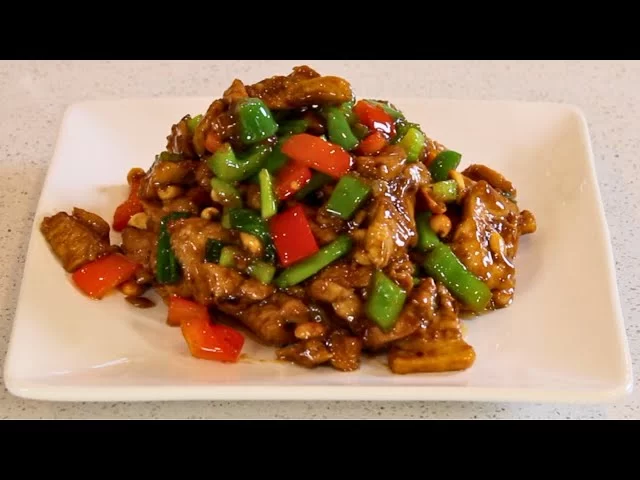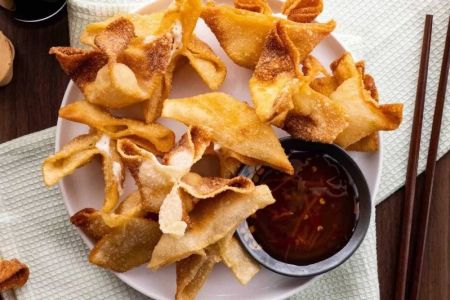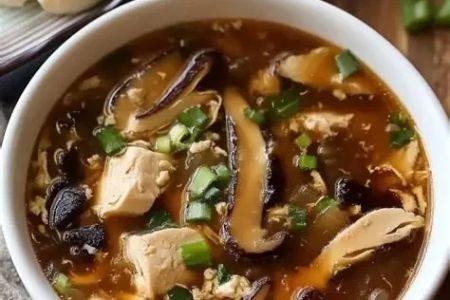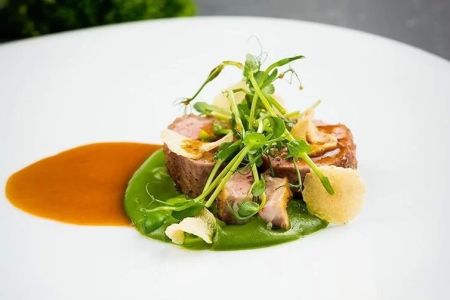Mastering Kung Pao Chicken: A Step-by-Step Guide
Kung Pao Chicken is one of the most beloved dishes in Chinese cuisine, especially in the United States. Whether you’ve enjoyed it at your favorite Chinese restaurant or discovered it through online recipes, there’s something truly special about this dish. What if you could bring the vibrant flavors of Kung Pao Chicken right to your kitchen? Well, you can! In this guide, I’m going to walk you through how to make authentic Kung Pao Chicken at home. Trust me, it’s easier than you might think and just as delicious as any takeout.
Why Kung Pao Chicken?
Before we dive into the recipe, let me share a bit of history. Kung Pao Chicken, or "Gong Bao Ji Ding," is a popular dish from the Sichuan region of China. It’s named after a Qing Dynasty official, Ding Baozhen, who loved the dish so much that it was eventually named after him. While the dish is spicy and full of flavor, it’s also balanced with a subtle sweetness, making it the perfect combination for a comforting meal. The good news is, with a few key ingredients and some simple techniques, you can recreate this iconic dish right at home!
The Essential Ingredients
One of the reasons Kung Pao Chicken is so incredible is the harmony of flavors it brings together. Here’s what you’ll need:
- Chicken: I prefer boneless, skinless chicken thighs, but you can use chicken breast if you like. Thighs are juicier and more flavorful, but both work perfectly.
- Dry Chili Peppers: These add the signature heat to the dish. Adjust the quantity depending on your spice tolerance.
- Roasted Peanuts: The crunchy peanuts balance the heat and bring texture to the dish. Don’t skip them!
- Sichuan Peppercorns: These little gems provide a unique numbing sensation, which is a hallmark of Sichuan cuisine.
- Ginger and Garlic: These ingredients form the aromatic base of the sauce.
- Soy Sauce: A good soy sauce is crucial for that rich, savory depth of flavor.
- Rice Vinegar and Sugar: These two ingredients balance out the heat with a sweet and sour profile.
Preparing the Chicken
Start by cutting the chicken into bite-sized cubes. This step is crucial for even cooking and ensuring every piece gets coated in the savory sauce. Once your chicken is cut, season it with a little soy sauce, cornstarch, and a pinch of salt. This will help the chicken stay tender while cooking and create that perfect, crispy texture.
Let the chicken sit for about 10 minutes to marinate in the seasoning. This allows the flavors to infuse into the meat, giving it a rich taste right from the start.
Cooking the Chicken
Now it’s time to cook the chicken! Heat a bit of vegetable oil in a large pan or wok over medium-high heat. When the oil is hot, add the chicken pieces and stir-fry until they turn golden brown and crispy. This should take around 5-7 minutes, depending on the size of your chicken pieces. Once done, remove the chicken from the pan and set it aside.
Making the Sauce
In the same pan, add a little more oil if needed, and toss in the Sichuan peppercorns and dried chili peppers. You’ll notice an immediate burst of aroma, as the oil starts to infuse with their flavors. After about 30 seconds, add the minced garlic and ginger to the pan and stir-fry them for another minute.
Now, it’s time to make the sauce. In a bowl, mix together soy sauce, rice vinegar, sugar, and a bit of cornstarch. Pour this mixture into the pan, and let it simmer until it thickens slightly. This sauce should be both savory and slightly sweet with just the right amount of tang. Adjust the flavor to your liking by adding more sugar or vinegar as needed.
Bringing It All Together
Once the sauce is ready, add the crispy chicken back into the pan. Toss everything together to ensure the chicken is evenly coated in the flavorful sauce. Finally, stir in the roasted peanuts and give the dish a final toss. The peanuts will add a delightful crunch that contrasts perfectly with the tender chicken.
Serving Your Kung Pao Chicken
Serve your Kung Pao Chicken immediately, ideally over a bed of fluffy steamed rice. The rice will help absorb the sauce, making each bite even more satisfying. For an authentic touch, garnish with a few extra peanuts and a sprinkle of green onions if you like.
Tips for the Perfect Kung Pao Chicken
- Adjust the Spice: The dried chili peppers bring the heat, but you can reduce the number or remove the seeds to make it milder. If you love spice, don’t hesitate to add extra peppers!
- Use Fresh Sichuan Peppercorns: If you can, use fresh Sichuan peppercorns for a more intense numbing effect. You can find them at most Asian grocery stores or online.
- Stir-Fry Quickly: Stir-frying is the key to keeping the chicken tender and juicy. Don’t overcrowd the pan, and cook in batches if necessary to get that perfect texture.
My Kung Pao Chicken Journey
Let me share a quick story about my first experience with Kung Pao Chicken. I remember the first time I tried it at a small Chinese restaurant in San Francisco. The flavors were so complex, yet balanced perfectly with spice, sweetness, and crunch. That experience stayed with me, and I knew I had to try making it at home. After several attempts and experimenting with different ingredients, I finally perfected the recipe. Now, it’s one of my go-to dishes when I’m craving something flavorful and satisfying. I hope this recipe brings you as much joy as it has brought me over the years!








